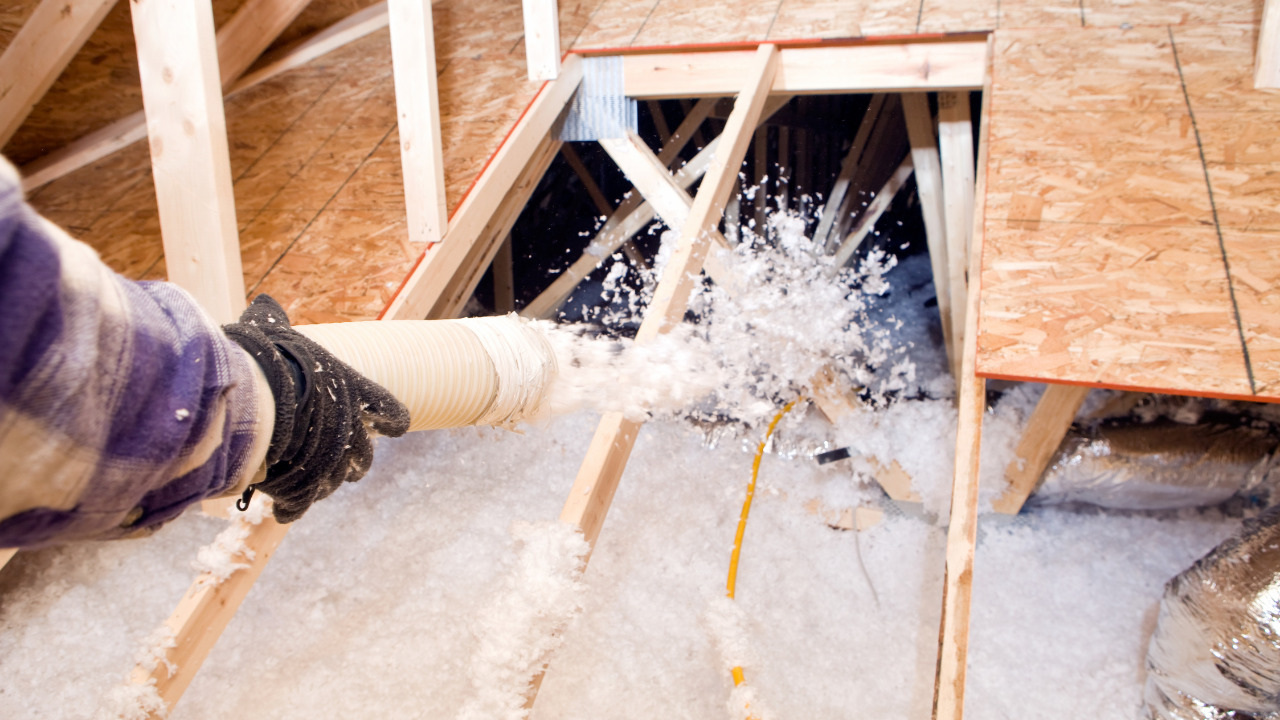External wall insulation can improve the energy efficiency of dwellings with solid walls. Before installation, however, it must be carefully considered. A layer of insulation fixed to an existing wall is commonly referred to as external wall insulation.
This layer will be covered with a coat of render or an alternate cladding to protect it from the weather. The topic is whether or not solid wall insulation should be considered by everyone when upgrading a home for sale.
If you want to know, “does external wall insulation increase house value?”
Table of Contents
External Wall Insulation: An Overview
Before asking about its value, you must first understand what external wall insulation is. External wall coatings have been developed to keep porous building materials like bricks insulated.
These wall coatings use cutting-edge technology to react with mineral groups to attach to surfaces like brick and concrete, protecting the home from dirt, rain, pollution, oil, algae, and other biological threats.
These wall coverings not only maintain the home’s beauty but also insulate it and reduce water absorption. Many homeowners are really pleased with the results.
A Few Things To Consider Before Installing EWI
Rain on the external skin and moisture from humans and their activities on the inside can penetrate a wall. By contrast, a cavity wall is an impermeable wall because the cavity is designed to establish a barrier to prevent moisture penetration.
Any rainwater that enters the cavity is evaporated by air movement. Many current insulating materials are non-permeable and are rendered or covered to keep rainfall out. They do not prevent moisture from reaching the internal surface of the wall due to people and what they do, which means that additional home ventilation is required to remove the wet air before it reaches the walls.
Benefits Of External Wall Insulation
There are two main benefits of adding loft insulation that could affect the price: a higher rating and a warmer feeling in the home. However, it isn’t very noticeable and therefore isn’t likely to stay in a buyer’s memory for very long.
External insulation, on the other hand, is a whole different story. External insulation offers an additional benefit in addition to the evident rise in rating and warmer feeling in the home. It completely transforms the appearance of the property. In a week, your home will be transformed from shabby-looking brickwork to a fresh, neutral-looking render.
The contrast is striking, and it will significantly impact some buildings’ curb appeal. It’s also a good time to address any other issues, such as cells or gutters that have become damaged.
External Wall Insulation Helps To Maintain Your Property Value
Maintaining the appearance of a vintage property is critical. Ornate reveals and detailing can add much value to a home, and a simple external wall insulation job would comprise removing these features and replacing them with a smooth finish.
Naturally, this will have a detrimental impact on the value of your home. Therefore, it’s far better to work around these elements as much as possible or leave the detail exposed. For an extra fee, you might also have the features reproduced and reinstalled on top of the insulation.
This will give the best results but will likely increase the job’s cost by thousands of dollars. When there is no alternative for cavity wall insulation, this exterior wall insulation method is frequently used to insulate walls on solid wall houses; nevertheless, there are other cases where it is the best option.
While adding insulation to your walls to increase your home’s thermal efficiency should seem like a no-brainer, no type of wall insulation, including external wall insulation, is without its own set of problems, most of which revolve around how your home handles moisture.
What Are The Disadvantages Of External Wall Insulation?
It has the potential to generate condensation, which could lead to damp difficulties. If you want to change the look of your house, you’ll almost certainly need planning clearance. It’s possible that it won’t work for listed structures or those in conservation areas.
The thickness of external wall insulation can pose problems around windows, eaves, and sills. It’s a costly procedure.
What Would Be The Cost For External Wall Insulation?
If you want to know if external insulation is worth the money, you’ll need to know how much it will cost. Due to the cost of establishing scaffolding and replacing or removing the cables and pipes that are fastened to the outer walls of your home, the cost of applying external insulation to your home will be slightly greater than the cost of applying interior insulation.
Some proprietary systems require specialized installation, although materials from builders’ merchants are far less expensive.
Do You Need To Get A Permit For External wall Insulation?
Whenever you have to install external wall insulation, it will alter the house’s exterior appearance. In most circumstances, this will necessitate obtaining planning approval before beginning the work, so check with your local government immediately. It is possible that consent will not be granted for residences or listed buildings.
Bottom Line
The thickness of the wall will be added by external insulation, which will be most noticeable around the reveals and eaves. Eaves width can be a deal-breaker because if the eaves aren’t wide enough to take the insulation, the cost of extending the eaves may outweigh the insulation’s benefits.
External wall insulation is costly but saves money in the long run. It is less expensive to include it as part of a bigger project, and it does not have to be done to the entire house; a handsome front elevation may be better suited to interior insulation, while less appealing side and back elevations can be insulated externally.





